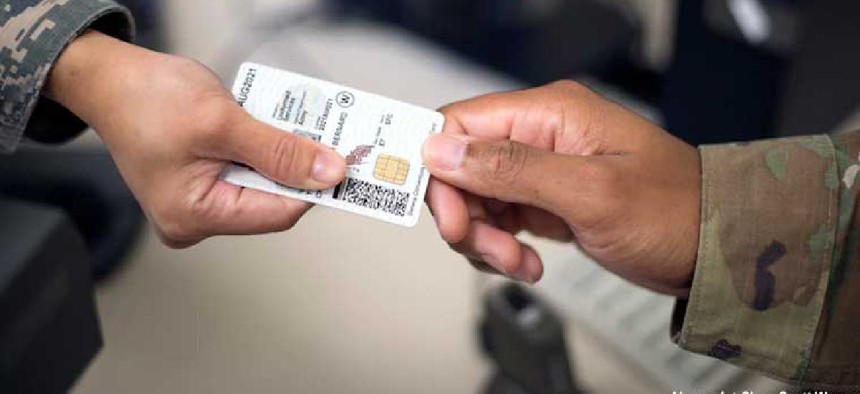Army eyes CAC-less physical security
The Pandemic Entry and Automated Control Environment aims to use the biometric and password metadata on CAC cards and related databases to secure access to sensitive areas.
Now that the pandemic has raised concerns about the spread of disease through contact with physical objects, the Army is looking to limit threats at the Pentagon, military bases and secured special facilities by reducing the use of common access cards (CAC) and other DOD-issued identification cards.
Current identity management solutions require a physical card, which is subject to compromise and whose physical handling may spread disease. The Pandemic Entry and Automated Control Environment (PEACE) aims to use the biometric and password metadata already collected and stored on CAC cards and related databases to facilitate not only seamless security for entering military facilities, but also internal control over personnel distribution and activities, according to a March 31 broad agency announcement. PEACE would provide real-time validation of personnel at entry points as well as within the installation and various facilities.
PEACE’s goal is to speed authentication at entry points by order of magnitude over existing procedures while increasing safety and security. The technology could be used to secure access to sensitive/classified areas, access and operations of critical weapons systems and homeland protection in urban areas, the Army suggested.
The Small Business Innovation Research program is asking for white papers that outline the development and implementation of a solution that leverages current CAC metadata – including biometrics – along with other identifying metadata. Strategies should comply with existing standards and leverage the sensor infrastructure the military currently uses to control physical access, according to the BAA. Solutions may consider using other electronic devices staff commonly carry, but the system must be operational even during power failures or when cellular networks are unavailable.
“The objective is a flexible system of identification that is not reliant on something one is carrying and that provides a comparable or superior level of protection while providing scalable, reliable and smarter DoD force protection capabilities,” the BAA said.
While the Army envisions this capability will first be used across government, the technology could be commercialized for secure access to venues such as Disney World where annual passes are sold and for major sporting events whose tickets are subject to counterfeiting.
White papers are due May 18. Read the full BAA here.
This article first appeared on GCN, a Defense Systems partner site.
NEXT STORY: First set of CMMC certification orgs emerge




